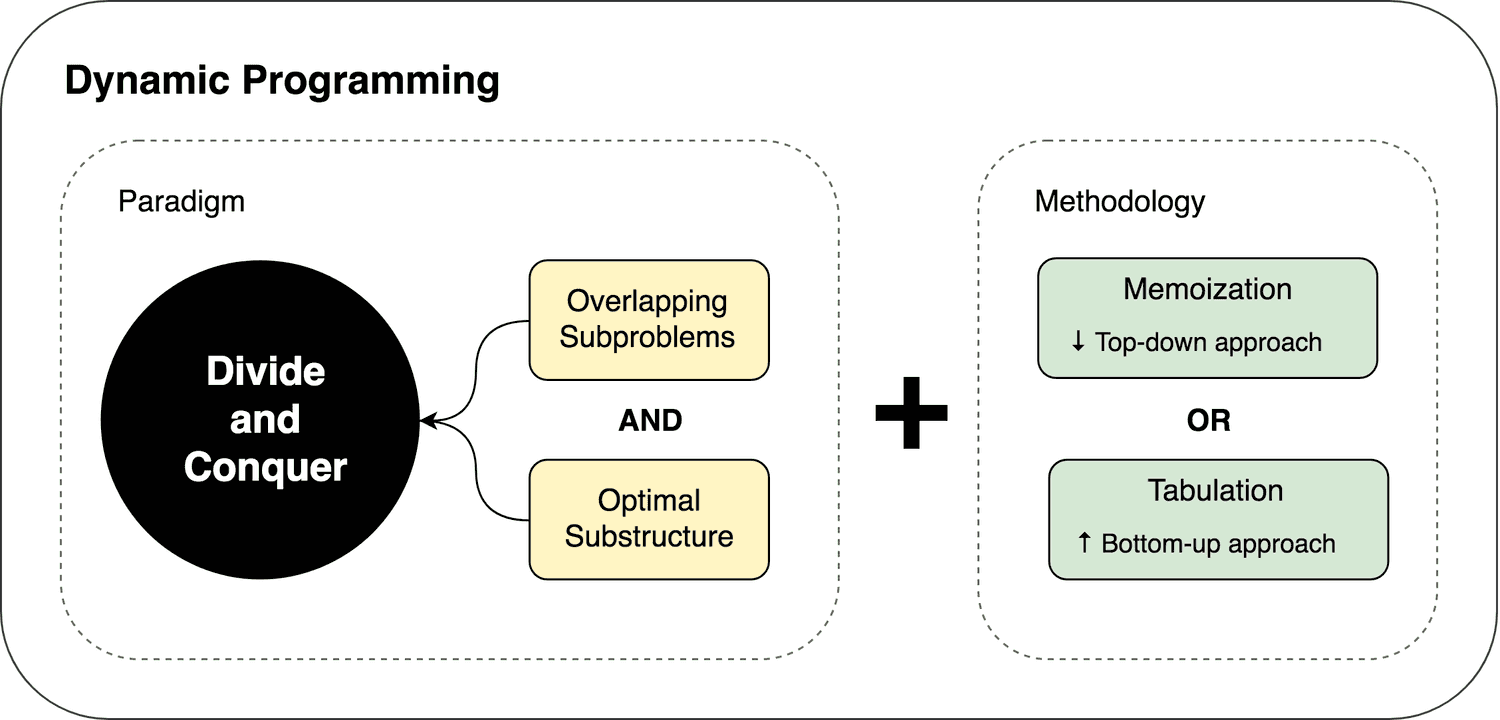Dynamic Programming
it refers to simplifying a complicated problem by breaking it down into simpler sub-problems in a recursive manner. While some decision problems cannot be taken apart this way, decisions that span several points in time do often break apart recursively. Likewise, in computer science, if a problem can be solved optimally by breaking it into sub-problems and then recursively finding the optimal solutions to the sub-problems, then it is said to have optimal substructure. - Wikipedia
Wilson was Secretary of Defense, and he actually had a pathological fear and hatred of the word “research” … dynamic programming was a good name. It was something not even a Congressman could object to. So I used it as an umbrella for my activities. - How Bellman came up with this name
Dynamic Programming vs. Divide-and-Conquer (2018)

Learn to Solve Algorithmic Problems & Coding Challenges - youtube (5h)
- Memoisation / summary
- fib memoization - from $O(2^n)$ to $O(n)$
- gridTraveler memoization - problem decomposition into recursive then memoisation - from $O(2^{n+m})$ to $O(n*m)$
- canSum memoization - can the combination of member of an array give the given sum. - from $O(n^m)$ to $O(n*m)$
- canConstruct memoization - word construction by concatenation from dictionnary (howSum with strings)
- countConstruct - count the number of solution
- allConstruct - give all solutions
- Tabulation
- fib tabulation - generative iteration vs recursion: tree structure encoded in an array. - $O(n)$
- gridTraveler tabulation - counting problem
- Sliding Window - a subset of dynamic programming problems